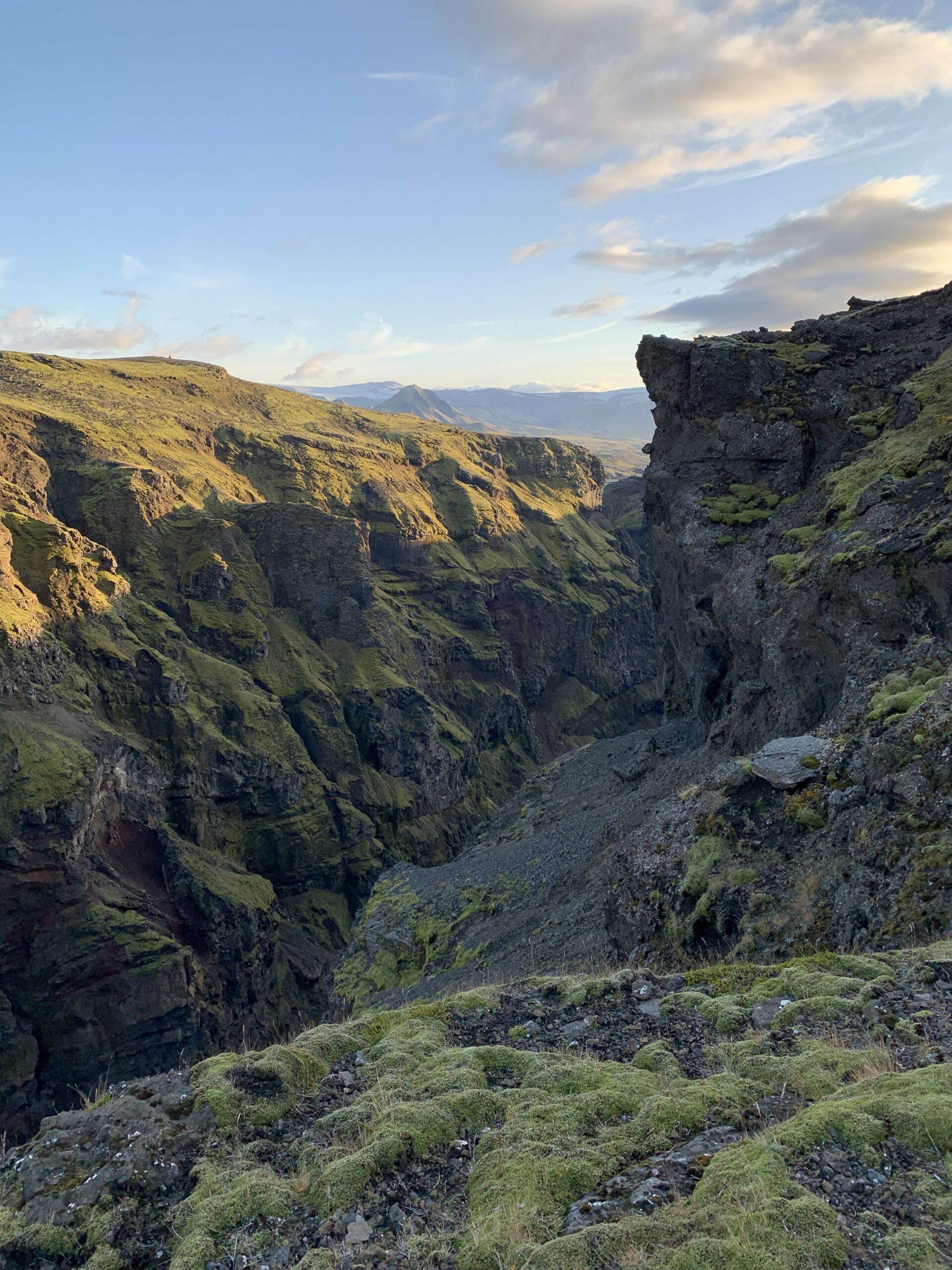Þingvellir
Þingvellir, also known as Thingvellir, is a national park in southwestern Iceland, about 40 kilometers east of Reykjavík. It is a UNESCO World Heritage Site and one of the most popular tourist destinations in Iceland.
One of the unique features of Þingvellir is that it is situated on the Mid-Atlantic Ridge, where the Eurasian and North American tectonic plates meet. The two plates are slowly moving apart, causing rifts and fissures in the landscape. The park is home to the Silfra fissure, where visitors can snorkel or dive in crystal-clear water between the two tectonic plates.
The landscape of Þingvellir is dominated by a vast lava field, which was created by volcanic activity in the area. The field is covered with moss and small shrubs, giving it a surreal and otherworldly appearance. The park also features the largest natural lake in Iceland, Þingvallavatn, which is surrounded by rugged mountains and hills.
Þingvellir is also an important historical site in Iceland. It was the site of Iceland's first parliament, the Alþingi, which was established in 930 AD and continued to meet at Þingvellir until 1798. Today, visitors can see the remains of the old parliament site, including the Lögberg, or "Law Rock", where the laws were recited and disputes were settled.
Overall, Þingvellir is a beautiful and unique destination that offers visitors a chance to explore the intersection of Iceland's geology and history.
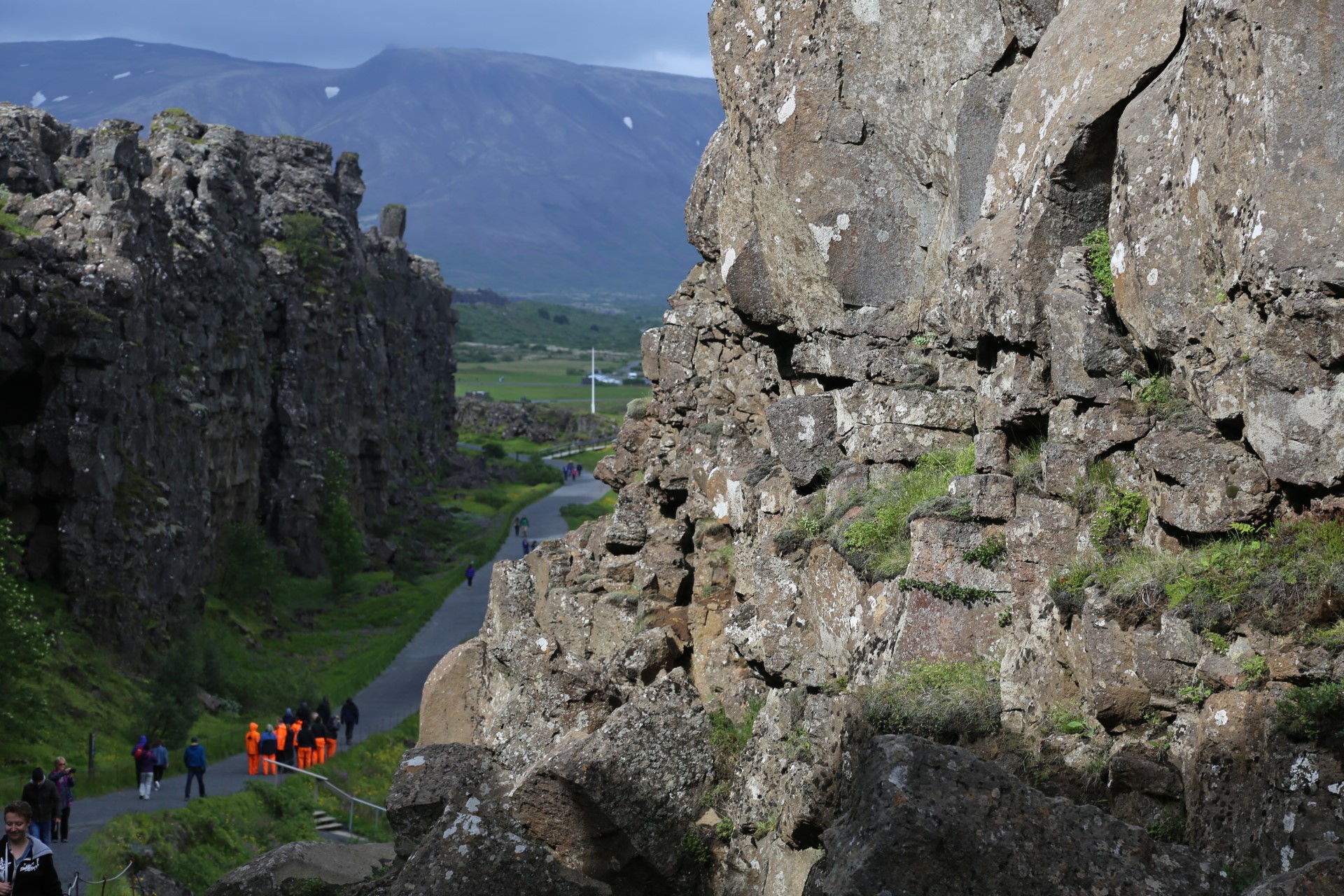
Are you interested in this place?
Geysir
Geysir is a famous geothermal area in southwestern Iceland that is renowned for its natural hot springs and geysers. It is located in the Haukadalur valley, which is approximately 100 kilometers east of Reykjavik.
The landscape of Geysir is truly unique and awe-inspiring. The area is situated on top of a highly active geothermal field that is characterized by bubbling mud pools, steam vents, and hot springs. The ground is covered in a thick layer of silica-rich mud and colorful algae, which gives the landscape an otherworldly appearance. The most famous geyser in the area is called Strokkur, which erupts every 5-10 minutes, shooting water up to 40 meters high into the air.
Geysir's geothermal activity is the result of Iceland's position on the Mid-Atlantic Ridge, where the North American and Eurasian tectonic plates meet. The underground heat comes from the earth's mantle, which is melted by the high pressure at the bottom of the crust. This creates hot water and steam that is forced to the surface through cracks and fissures in the ground.
In addition to its stunning natural beauty, Geysir has also played an important role in Icelandic culture for centuries. The area was known to the Vikings, who considered it a sacred site, and it has been a popular tourist destination since the 19th century. Today, visitors from all over the world come to Geysir to witness its incredible geothermal activity and learn about Iceland's unique geological history.
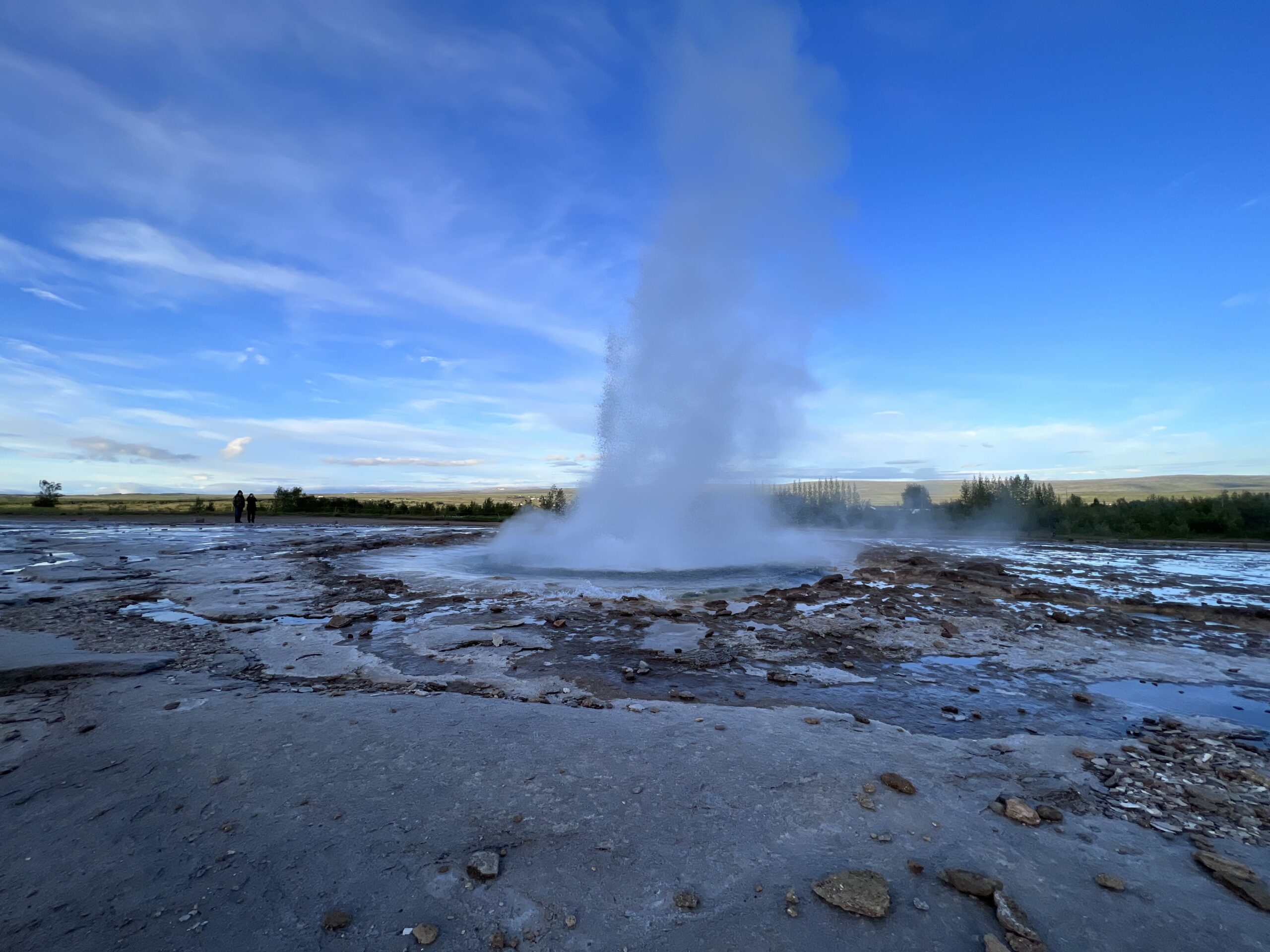
Are you interested in this place?
Gullfoss
Gullfoss is a powerful and beautiful waterfall located in the southwest of Iceland, close to the famous Geysir geothermal area. Gullfoss is one of Iceland's most popular natural attractions, drawing visitors from all over the world to witness its stunning beauty.
The landscape surrounding Gullfoss is dominated by the Hvítá river, which cascades down two tiers of a steep rocky canyon before plunging into a deep, misty pool below. The waterfall is surrounded by rugged cliffs and rocky outcroppings, and the water of the Hvítá river is a beautiful turquoise blue color. In the winter, the surrounding landscape is covered in snow and ice, which creates an even more dramatic and beautiful scene.
Gullfoss is not only beautiful but also a powerful force of nature. The waterfall is formed by the Hvítá river, which flows from the Langjökull glacier and has carved out the canyon over thousands of years. The water falls 32 meters in two stages, creating a thundering roar and a huge spray of mist that can be seen from miles away.
The name "Gullfoss" means "Golden Falls" in Icelandic, and it is thought to refer to the golden hue of the waterfall on sunny days, or to a legend that says that the daughter of the waterfall's owner threw all her gold into the waterfall to prevent it from being taken by a greedy businessman.
Today, Gullfoss is a protected natural area and is part of the famous Golden Circle tourist route in Iceland. Visitors can take a walk along a boardwalk that runs along the edge of the canyon to get an up-close view of the waterfall and experience its powerful energy.
kilometers east of Reykjavík. It is a UNESCO World Heritage Site and one of the most popular tourist destinations in Iceland.
One of the unique features of Þingvellir is that it is situated on the Mid-Atlantic Ridge, where the Eurasian and North American tectonic plates meet. The two plates are slowly moving apart, causing rifts and fissures in the landscape. The park is home to the Silfra fissure, where visitors can snorkel or dive in crystal-clear water between the two tectonic plates.
The landscape of Þingvellir is dominated by a vast lava field, which was created by volcanic activity in the area. The field is covered with moss and small shrubs, giving it a surreal and otherworldly appearance. The park also features the largest natural lake in Iceland, Þingvallavatn, which is surrounded by rugged mountains and hills.
Þingvellir is also an important historical site in Iceland. It was the site of Iceland's first parliament, the Alþingi, which was established in 930 AD and continued to meet at Þingvellir until 1798. Today, visitors can see the remains of the old parliament site, including the Lögberg, or "Law Rock", where the laws were recited and disputes were settled.
Overall, Þingvellir is a beautiful and unique destination that offers visitors a chance to explore the intersection of Iceland's geology and history.
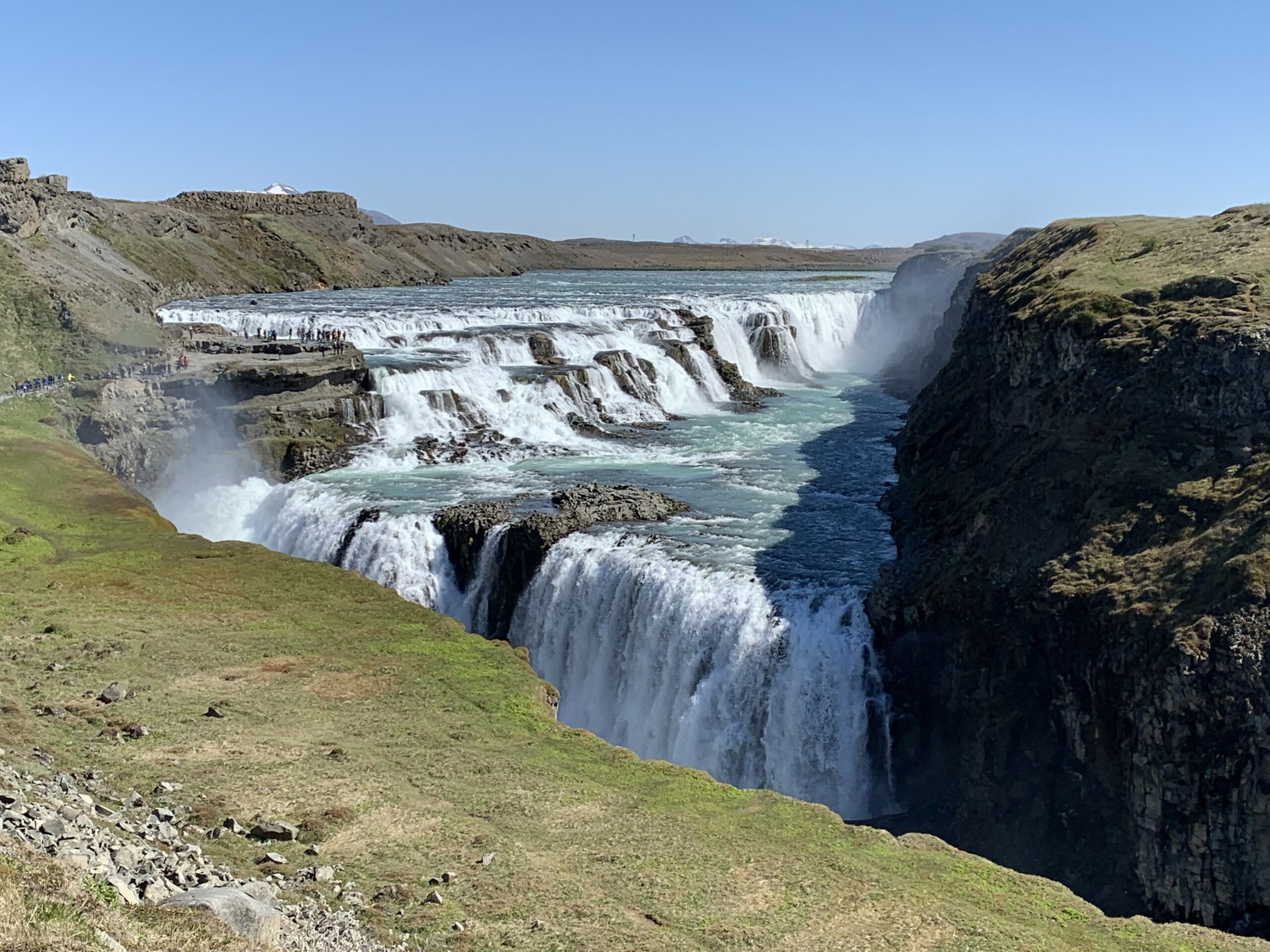
Are you interested in this place?
Langjökull
Langjökull is a massive glacier that is located in the central highlands of Iceland, close to the Gullfoss waterfall. It is the second-largest glacier in Iceland, covering an area of approximately 950 square kilometers and reaching a height of 1,450 meters above sea level.
The landscape surrounding Langjökull is characterized by a vast expanse of snow and ice, rocky outcroppings, and rugged mountains. The glacier is located in a remote and isolated area, and the only way to access it is by taking a guided tour or hiking expedition.
One of the most popular ways to experience Langjökull is by taking a snowmobile tour across the glacier. This is an exhilarating experience that allows visitors to see the glacier up close and experience its awe-inspiring beauty. The tour takes visitors through a variety of landscapes, including vast snowfields, deep crevasses, and rugged ice formations.
Another popular activity on Langjökull is ice caving, which involves exploring the maze-like tunnels and caves that are formed within the glacier. These caves are created by meltwater flowing through the ice and can be quite challenging to navigate. However, they offer a unique and unforgettable experience of the glacier's interior.
Langjökull is also an important site for scientific research, as its ice cores provide valuable information about the earth's climate history. Researchers have used ice core samples from Langjökull to study changes in the earth's climate over thousands of years.
Overall, Langjökull is an incredible natural wonder that offers a unique and unforgettable experience for visitors to Iceland. Its stunning beauty and remote location make it a must-see destination for nature lovers and outdoor enthusiasts.
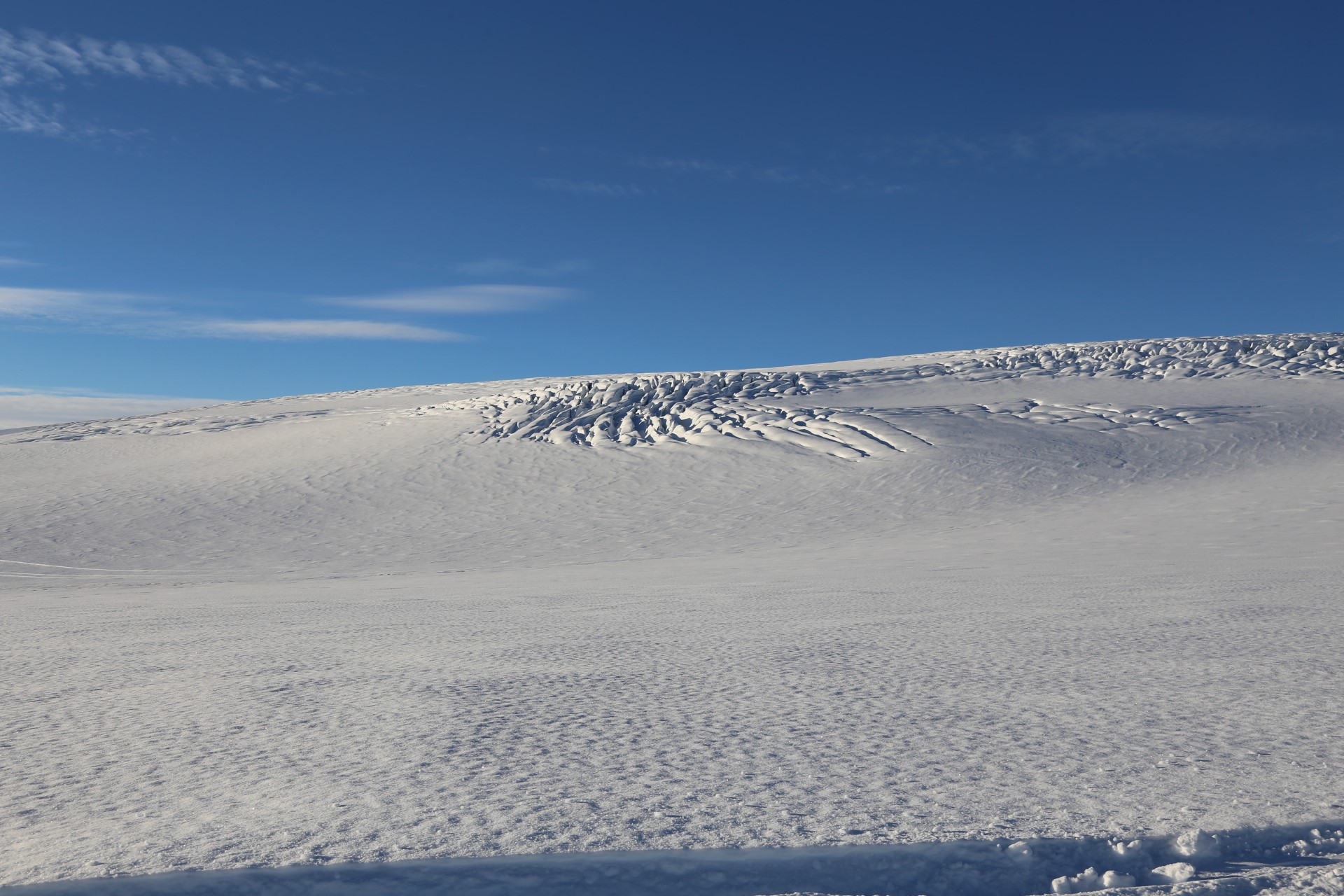
Are you interested in this place?
Faxi
Faxi waterfall is a beautiful and serene waterfall located in southwestern Iceland, approximately 12 kilometers east of the famous Gullfoss waterfall. While it is not as well-known as Gullfoss or other waterfalls in Iceland, Faxi is still a stunning natural attraction that is well worth a visit.
The landscape surrounding Faxi is characterized by lush green hills, rocky outcroppings, and the tranquil waters of the Tungufljót river. The waterfall itself is relatively small, with a height of only 7 meters, but it is still a beautiful sight to behold. The water cascades down a wide, horseshoe-shaped rock face before flowing gently into the river below.
One of the things that makes Faxi unique is the peaceful and calm atmosphere that surrounds it. Unlike other more popular waterfalls in Iceland, Faxi is relatively quiet and secluded, making it a perfect place to relax and enjoy the natural beauty of the area. There are picnic tables and benches located around the waterfall, making it a great spot for a picnic or a quiet moment of contemplation.
Faxi is also a popular spot for salmon fishing. The Tungufljót river is home to a variety of fish, including salmon and trout, and there are several fishing lodges located in the area. Visitors can watch the fishermen as they cast their lines into the river and try to catch the elusive fish.
Overall, Faxi waterfall is a peaceful and beautiful natural attraction that is well worth a visit for those who want to experience the quiet beauty of Iceland's countryside. Its tranquil atmosphere, stunning natural surroundings, and abundance of wildlife make it a perfect destination for nature lovers and outdoor enthusiasts.
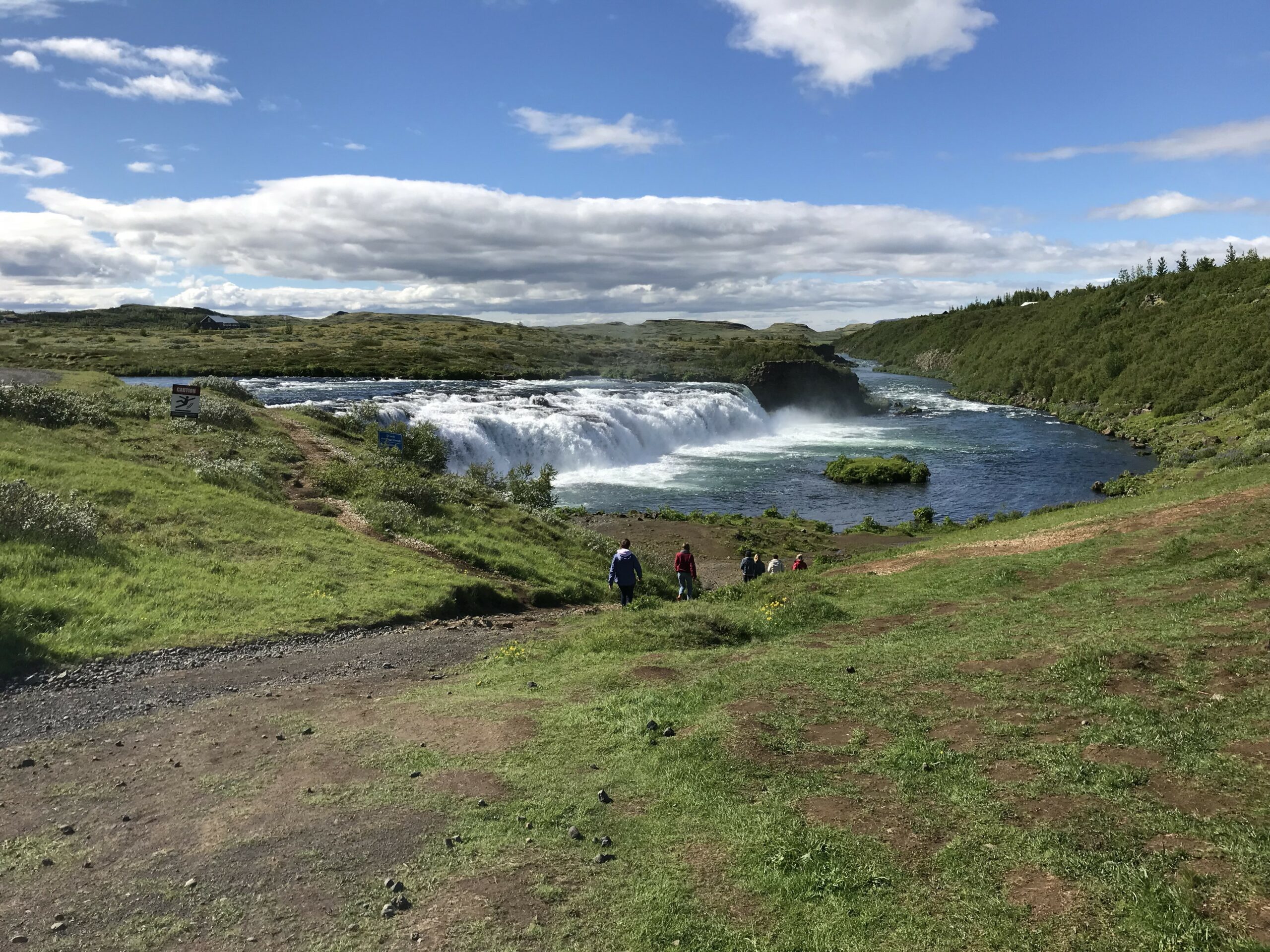
Are you interested in this place?
Kerið
Kerið is a volcanic crater located in southern Iceland, approximately 55 kilometers from Reykjavik. It is one of the most popular natural attractions in the area, drawing visitors from all over the world to witness its stunning beauty and unique geological features.
The landscape surrounding Kerið is dominated by rugged hills, rocky outcroppings, and the vast expanse of Iceland's countryside. The crater itself is approximately 55 meters deep, 170 meters wide, and 270 meters across. The water in the crater is a beautiful and striking blue-green color, which contrasts beautifully with the red and brown volcanic rocks that make up the walls of the crater.
One of the things that makes Kerið unique is its vivid colors and stunning natural beauty. The red, brown, and green hues of the volcanic rock and the blue-green waters of the crater create a breathtaking and otherworldly landscape that is unlike anything else in the world.
Visitors can walk along a path that runs around the edge of the crater, offering stunning views of the surrounding landscape and the crater itself. There is also a staircase that leads down into the crater, allowing visitors to get an up-close look at the beautiful blue-green water and the rocky walls of the crater.
Kerið is believed to have been formed around 3,000 years ago, during a volcanic eruption. The crater was formed when the magma chamber beneath the earth's surface emptied, causing the ground above to collapse and form the crater that we see today.
Overall, Kerið is a beautiful and unique natural attraction that is well worth a visit for those who want to experience the stunning beauty of Iceland's geological wonders. Its vivid colors, stunning landscape, and unique geological features make it a must-see destination for nature lovers and outdoor enthusiasts.
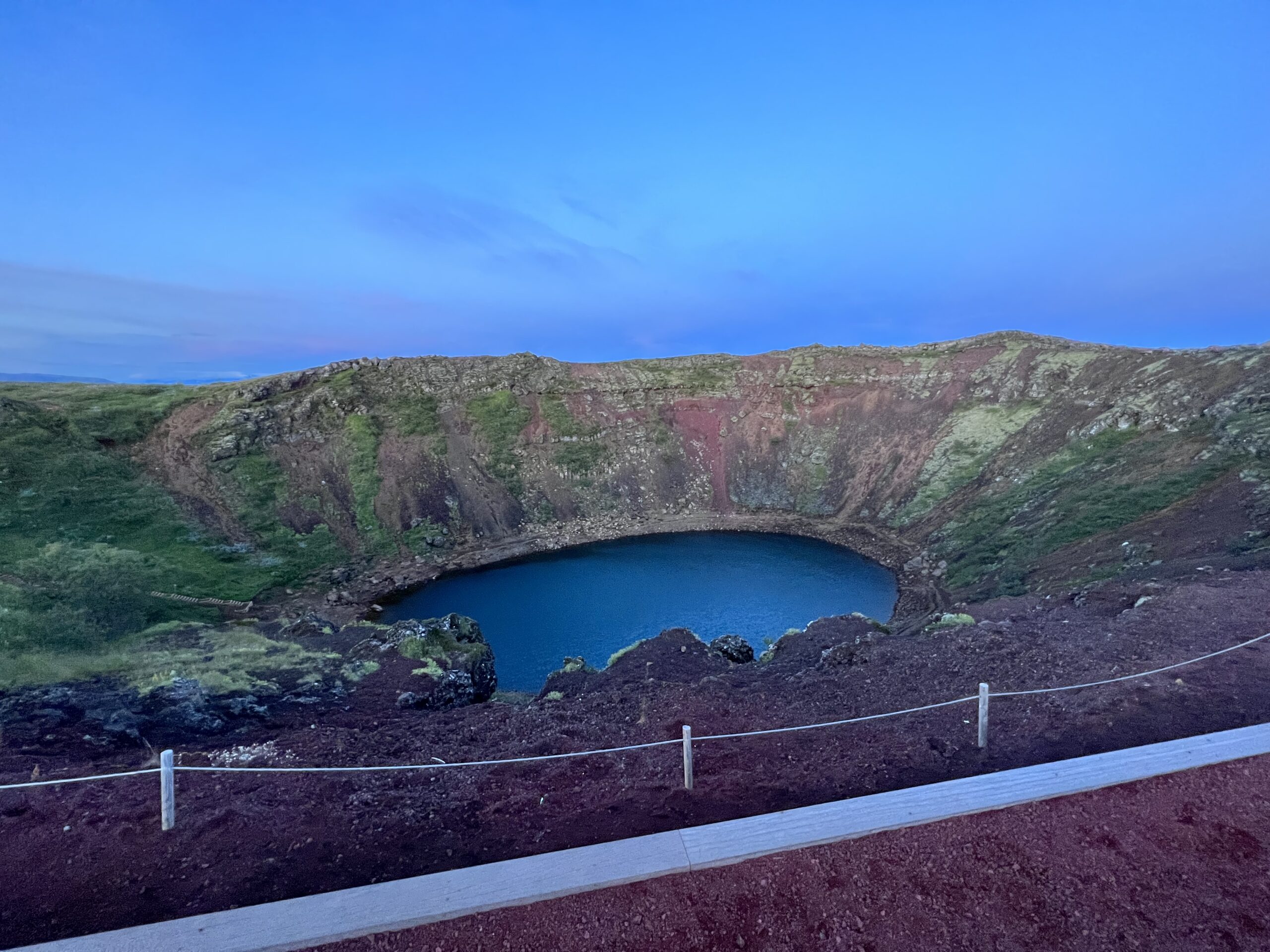
Are you interested in this place?
Friðheimar
Þingvellir, also known as Thingvellir, is a national park in southwestern Iceland, about 40 kilometers east of Reykjavík. It is a UNESCO World Heritage Site and one of the most popular tourist destinations in Iceland.
One of the unique features of Þingvellir is that it is situated on the Mid-Atlantic Ridge, where the Eurasian and North American tectonic plates meet. The two plates are slowly moving apart, causing rifts and fissures in the landscape. The park is home to the Silfra fissure, where visitors can snorkel or dive in crystal-clear water between the two tectonic plates.
The landscape of Þingvellir is dominated by a vast lava field, which was created by volcanic activity in the area. The field is covered with moss and small shrubs, giving it a surreal and otherworldly appearance. The park also features the largest natural lake in Iceland, Þingvallavatn, which is surrounded by rugged mountains and hills.
Þingvellir is also an important historical site in Iceland. It was the site of Iceland's first parliament, the Alþingi, which was established in 930 AD and continued to meet at Þingvellir until 1798. Today, visitors can see the remains of the old parliament site, including the Lögberg, or "Law Rock", where the laws were recited and disputes were settled.
Overall, Þingvellir is a beautiful and unique destination that offers visitors a chance to explore the intersection of Iceland's geology and history.

Are you interested in this place?
Efstidalur
Efstidalur is a family-owned farm and restaurant located in the scenic countryside of western Iceland, near the town of Laugarvatn. It is a popular tourist destination that offers visitors a chance to experience authentic Icelandic cuisine and culture, as well as the beautiful natural surroundings of Iceland's countryside.
The farm at Efstidalur has been in the same family for over a century, and the current owners have worked hard to create a sustainable and environmentally friendly business that showcases the best of Icelandic agriculture and cuisine. They specialize in producing fresh, organic dairy products, including milk, cheese, and ice cream, which are all made from milk produced by the farm's own cows.
One of the highlights of a visit to Efstidalur is the chance to dine in the farm's restaurant, which offers a wide range of Icelandic dishes made with fresh, locally sourced ingredients. The menu features traditional Icelandic dishes such as lamb stew, fish and chips, and the famous Icelandic hot dog, as well as a range of vegetarian and gluten-free options.
Another popular attraction at Efstidalur is the farm's ice cream shop, which offers a variety of delicious ice cream flavors made from the farm's own milk. Visitors can enjoy their ice cream while taking in the beautiful views of the surrounding countryside.
Overall, Efstidalur is a wonderful destination for anyone interested in experiencing the best of Icelandic agriculture, cuisine, and culture. Its stunning natural surroundings, fresh, organic dairy products, and warm, welcoming atmosphere make it a must-visit destination for anyone traveling to western Iceland.
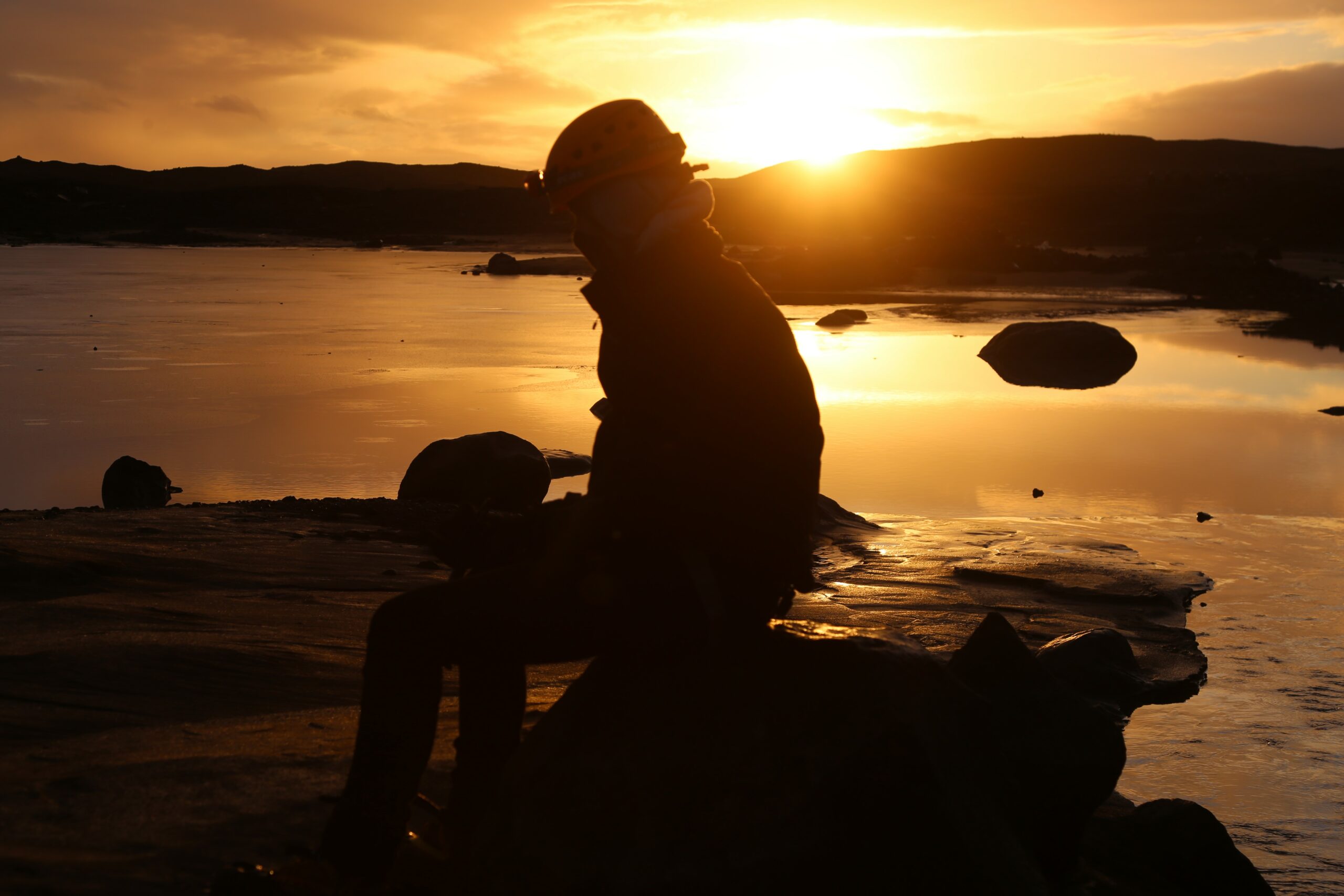
Are you interested in this place?
Seljalandsfoss waterfall
Seljalandsfoss is a stunning waterfall located in southern Iceland,
the landscape surrounding Seljalandsfoss is characterized by dramatic cliffs, rugged mountains, and rolling hills, all of which make for a stunning backdrop to the waterfall itself. The waterfall is fed by the Seljalandsá River, which flows down from the Eyjafjallajökull glacier and drops over 60 meters (197 feet) into a pool below.
One of the unique features of Seljalandsfoss is the path that leads behind the waterfall, allowing visitors to walk right up to the cascading water and experience it up close. This path is quite narrow and can be slippery, so visitors should exercise caution when walking behind the waterfall, particularly if the weather is wet or windy.
In addition to the main waterfall, Seljalandsfoss also has several smaller cascades that flow down the cliffs surrounding the main waterfall. These smaller waterfalls are also quite beautiful and can be accessed via a short hike along a nearby trail.
Seljalandsfoss is particularly beautiful in the evening, when the sun is low in the sky and creates a stunning golden glow around the waterfall. Many visitors choose to visit the waterfall in the evening to take advantage of this magical light.
Overall, Seljalandsfoss is a must-visit destination for anyone traveling to Iceland, offering a unique and unforgettable experience of natural beauty and wonder. The stunning landscape, combined with the opportunity to walk behind the waterfall, make it one of the most popular and memorable sights in the country.
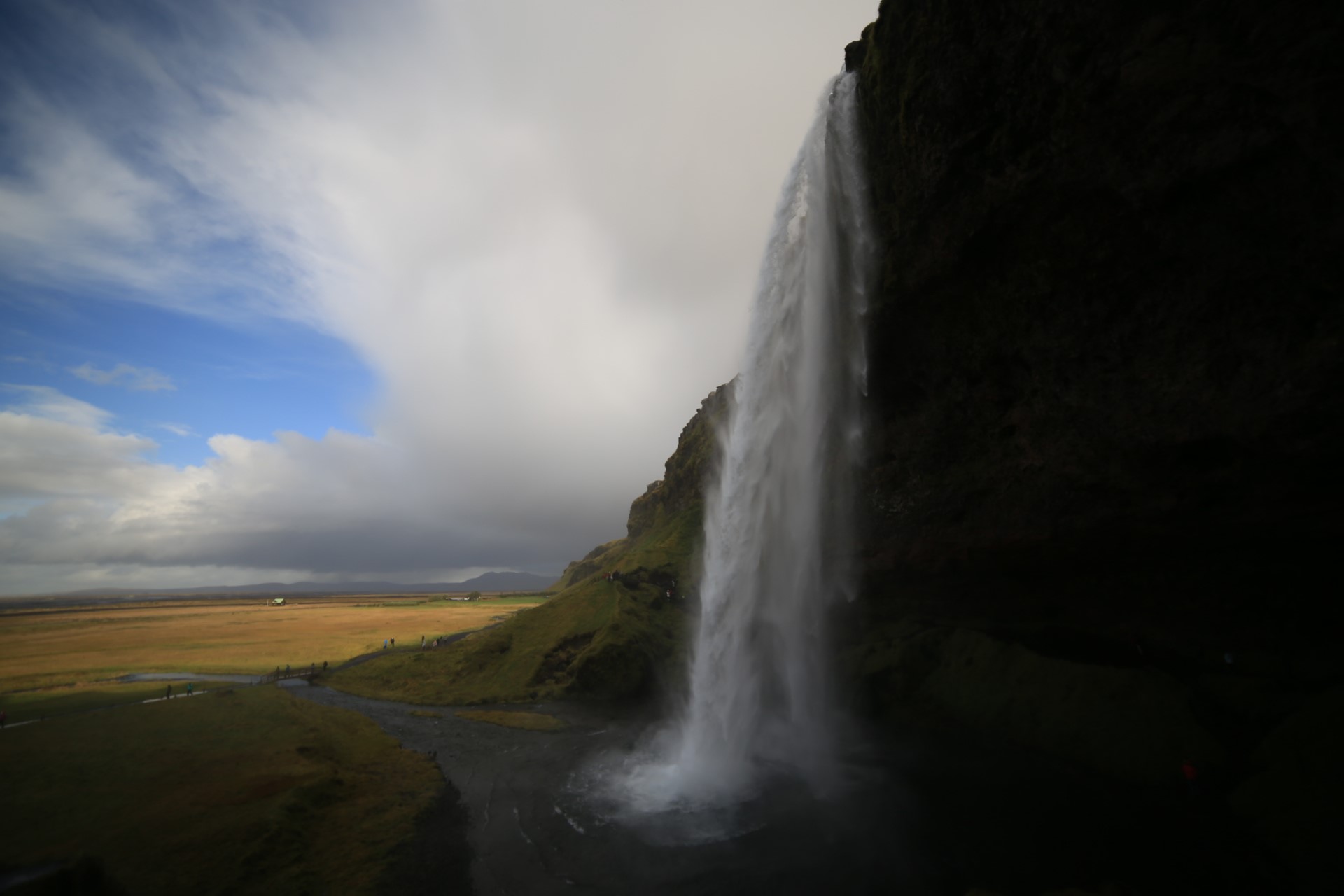
Are you interested in this place?
Skógafoss waterfall
Skógafoss is a magnificent waterfall located in southern Iceland, about 30 km (18.6 miles) from Seljalandsfoss. It is one of the largest and most powerful waterfalls in the country, with a width of 25 meters (82 feet) and a drop of 60 meters (197 feet). Skógafoss is located on the Skógá River, which originates from the Eyjafjallajökull glacier and flows out to the Atlantic Ocean.
The landscape surrounding Skógafoss is breathtaking, with rolling hills, rugged mountains, and expansive glaciers in the distance. The waterfall is surrounded by lush green vegetation, which creates a beautiful contrast with the white spray of the falling water. The landscape is particularly dramatic during the winter months, when the surrounding hills and cliffs are covered in snow.
One of the unique features of Skógafoss is the staircase that leads up to the top of the waterfall. The staircase is quite steep, with over 500 steps, but the climb is worth it for the stunning views of the surrounding landscape and the waterfall itself. From the top of the waterfall, visitors can also access a hiking trail that leads to several other nearby waterfalls.
Another unique feature of Skógafoss is the legend that surrounds it. According to local folklore, a Viking warrior named Þrasi hid a treasure behind the waterfall many centuries ago, which has never been found. Visitors can imagine the hidden treasure while standing at the base of the waterfall and feeling the power of the falling water.
Overall, Skógafoss is a must-visit destination for anyone traveling to Iceland. Its stunning beauty, unique legends, and dramatic landscape make it one of the most iconic and memorable sights in the country.
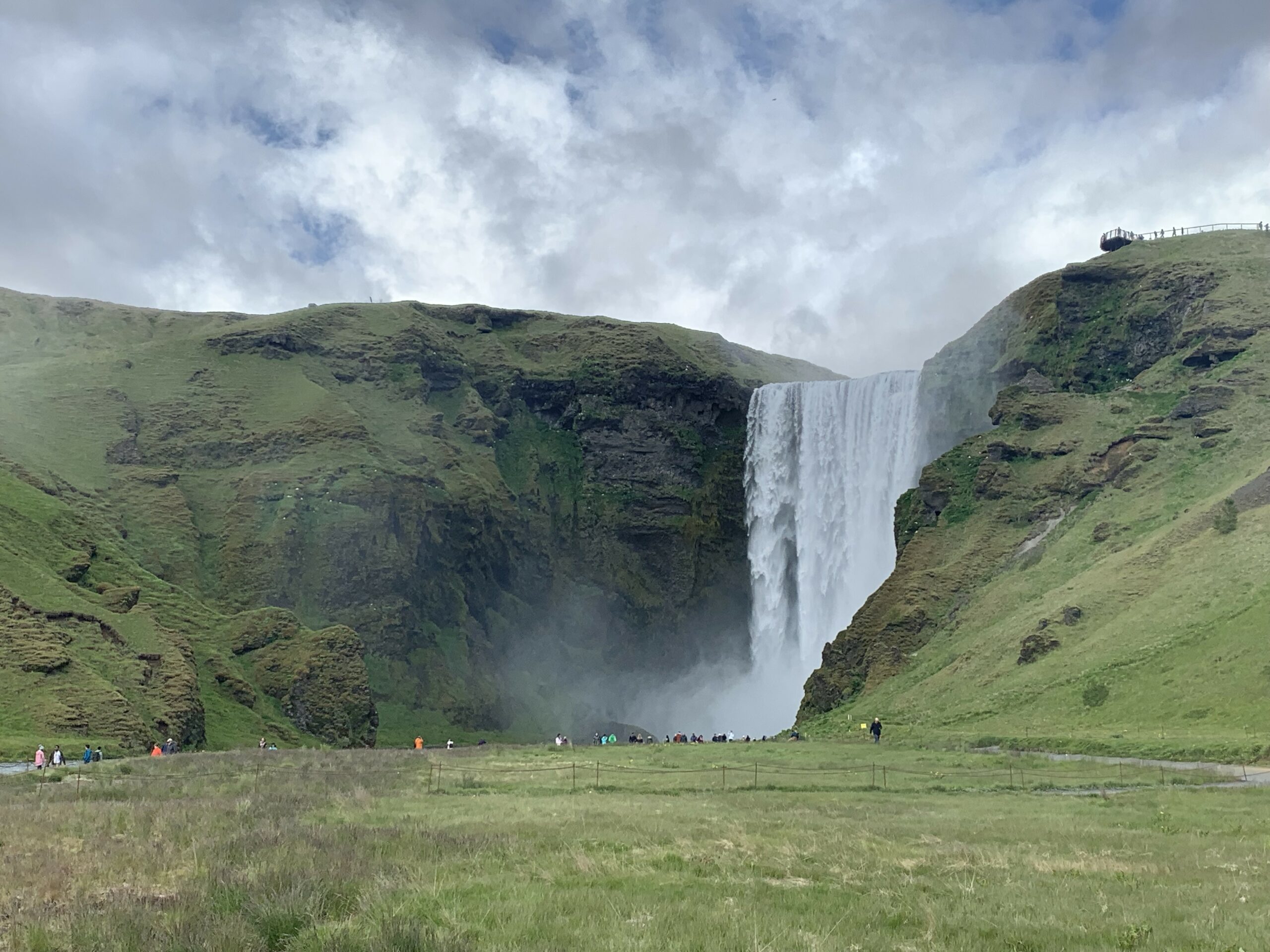
Are you interested in this place?
Dyrholaey
Skógafoss is a magnificent waterfall located in southern Iceland, about 30 km (18.6 miles) from Seljalandsfoss. It is one of the largest and most powerful waterfalls in the country, with a width of 25 meters (82 feet) and a drop of 60 meters (197 feet). Skógafoss is located on the Skógá River, which originates from the Eyjafjallajökull glacier and flows out to the Atlantic Ocean.
The landscape surrounding Skógafoss is breathtaking, with rolling hills, rugged mountains, and expansive glaciers in the distance. The waterfall is surrounded by lush green vegetation, which creates a beautiful contrast with the white spray of the falling water. The landscape is particularly dramatic during the winter months, when the surrounding hills and cliffs are covered in snow.
One of the unique features of Skógafoss is the staircase that leads up to the top of the waterfall. The staircase is quite steep, with over 500 steps, but the climb is worth it for the stunning views of the surrounding landscape and the waterfall itself. From the top of the waterfall, visitors can also access a hiking trail that leads to several other nearby waterfalls.
Another unique feature of Skógafoss is the legend that surrounds it. According to local folklore, a Viking warrior named Þrasi hid a treasure behind the waterfall many centuries ago, which has never been found. Visitors can imagine the hidden treasure while standing at the base of the waterfall and feeling the power of the falling water.
Overall, Skógafoss is a must-visit destination for anyone traveling to Iceland. Its stunning beauty, unique legends, and dramatic landscape make it one of the most iconic and memorable sights in the country.
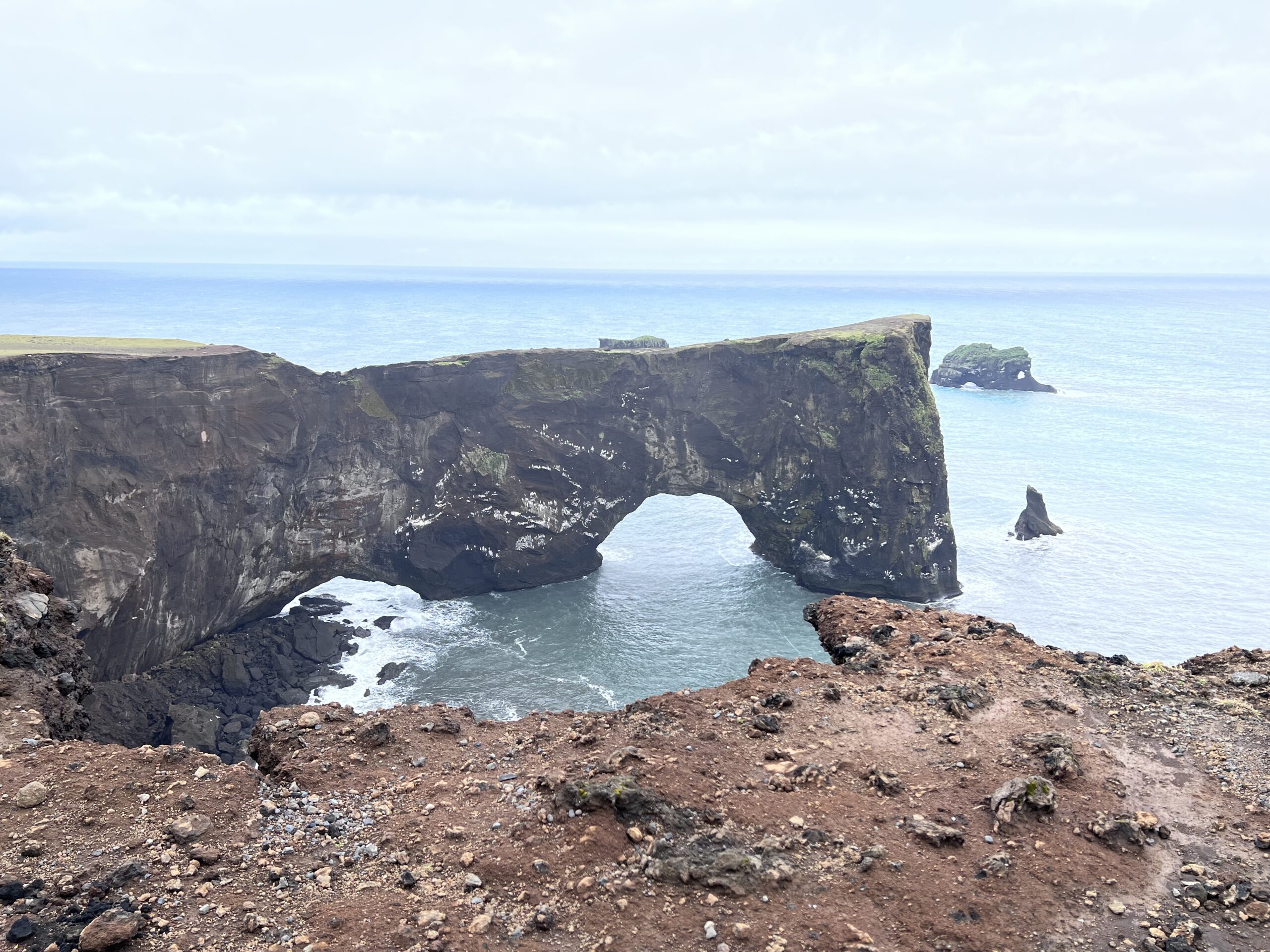
Are you interested in this place?
Dyrholaey
Skógafoss is a magnificent waterfall located in southern Iceland, about 30 km (18.6 miles) from Seljalandsfoss. It is one of the largest and most powerful waterfalls in the country, with a width of 25 meters (82 feet) and a drop of 60 meters (197 feet). Skógafoss is located on the Skógá River, which originates from the Eyjafjallajökull glacier and flows out to the Atlantic Ocean.
The landscape surrounding Skógafoss is breathtaking, with rolling hills, rugged mountains, and expansive glaciers in the distance. The waterfall is surrounded by lush green vegetation, which creates a beautiful contrast with the white spray of the falling water. The landscape is particularly dramatic during the winter months, when the surrounding hills and cliffs are covered in snow.
One of the unique features of Skógafoss is the staircase that leads up to the top of the waterfall. The staircase is quite steep, with over 500 steps, but the climb is worth it for the stunning views of the surrounding landscape and the waterfall itself. From the top of the waterfall, visitors can also access a hiking trail that leads to several other nearby waterfalls.
Another unique feature of Skógafoss is the legend that surrounds it. According to local folklore, a Viking warrior named Þrasi hid a treasure behind the waterfall many centuries ago, which has never been found. Visitors can imagine the hidden treasure while standing at the base of the waterfall and feeling the power of the falling water.
Overall, Skógafoss is a must-visit destination for anyone traveling to Iceland. Its stunning beauty, unique legends, and dramatic landscape make it one of the most iconic and memorable sights in the country.
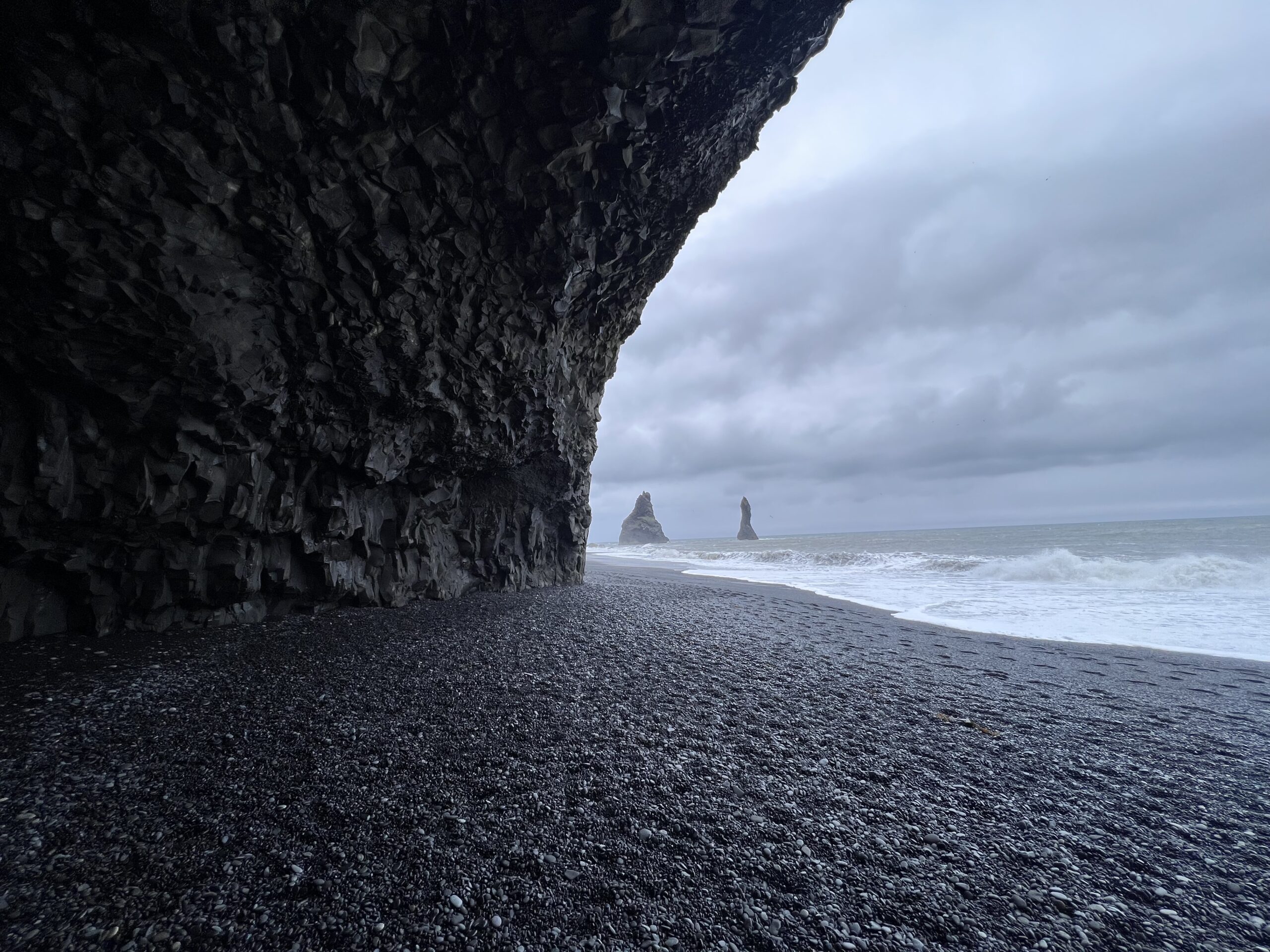
Are you interested in this place?
Fjaðrárgljúfur canyon
Skógafoss is a magnificent waterfall located in southern Iceland, about 30 km (18.6 miles) from Seljalandsfoss. It is one of the largest and most powerful waterfalls in the country, with a width of 25 meters (82 feet) and a drop of 60 meters (197 feet). Skógafoss is located on the Skógá River, which originates from the Eyjafjallajökull glacier and flows out to the Atlantic Ocean.
The landscape surrounding Skógafoss is breathtaking, with rolling hills, rugged mountains, and expansive glaciers in the distance. The waterfall is surrounded by lush green vegetation, which creates a beautiful contrast with the white spray of the falling water. The landscape is particularly dramatic during the winter months, when the surrounding hills and cliffs are covered in snow.
One of the unique features of Skógafoss is the staircase that leads up to the top of the waterfall. The staircase is quite steep, with over 500 steps, but the climb is worth it for the stunning views of the surrounding landscape and the waterfall itself. From the top of the waterfall, visitors can also access a hiking trail that leads to several other nearby waterfalls.
Another unique feature of Skógafoss is the legend that surrounds it. According to local folklore, a Viking warrior named Þrasi hid a treasure behind the waterfall many centuries ago, which has never been found. Visitors can imagine the hidden treasure while standing at the base of the waterfall and feeling the power of the falling water.
Overall, Skógafoss is a must-visit destination for anyone traveling to Iceland. Its stunning beauty, unique legends, and dramatic landscape make it one of the most iconic and memorable sights in the country.
